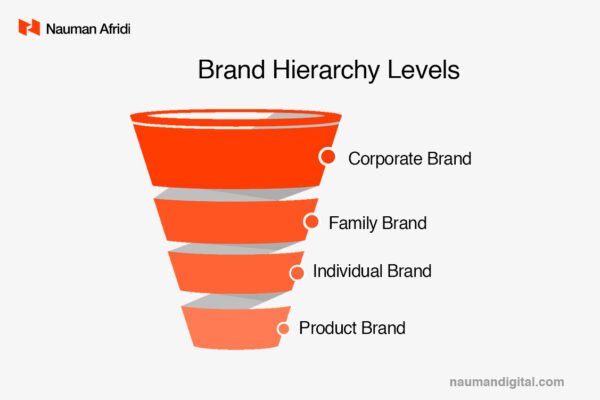The concept of sustainability branding has sparked debates among consumers, creating a divide between optimists who appreciate the positive changes brands are making for the planet and pessimists who criticize it as mere “greenwashing” or marketing tactics. However, there’s no denying the increasing significance of sustainability in the world of brands. The importance of how sustainable brands are is undeniable and continues to rise.
What is Sustainability Branding?
Sustainability branding involves integrating environmental, economic, and social concerns into a business’s operations. Sustainable branding entails creating, maintaining, and projecting a brand that not only benefits customers but also contributes positively to the planet. With consumers becoming more aware of the environmental impact of brands, sustainable businesses are leading the movement to reverse the damage and cater to the growing demand for sustainability.
In contrast to traditional businesses focused solely on profit maximization, sustainability branding emphasizes a higher purpose. It goes beyond financial gains and communicates to the audience that the business aspires to make a positive impact on the environment and society.
Importance of Sustainability Branding
The importance of sustainability branding is underscored by the growing concern among people regarding environmental, economic, and social issues. Brands that prioritize eco-friendly practices and place the planet’s well-being above profit margins are gaining traction. Modern consumers expect businesses to adopt sustainable practices, and it’s the brands aligning with these values that will create a lasting impact in the long run. As a result, integrating sustainability into your brand has become not just a choice but a necessity in today’s conscious consumer landscape.
Changes in Consumer Spending Habits
In the evolving landscape of consumer preferences, sustainability has become a pivotal factor influencing purchasing decisions. Recent data from Business Wire highlights that 60 percent of global consumers consider sustainability a crucial criterion when choosing products and services. This shift indicates that consumers are now inclined to support causes they care about, including renewable energy usage and environmentally friendly products.
However, merely being a sustainable brand is not sufficient; effective communication of your commitment to combating climate change and addressing environmental concerns is equally vital. Brands need to be proactive in conveying their stance on social issues to capture the hearts of their target audience.
Principles of Sustainable Branding
Sustainable branding goes beyond superficial elements like green-themed logos or eco-friendly labels on packages. It necessitates a comprehensive approach that permeates the entire business process:
Developing a Sustainability Roadmap:
According to Sustainable Brands, eco-conscious companies should establish a sustainability roadmap encompassing elements such as system-wide brand influence, net-positive products and services, purpose beyond profit, and regenerative operations. Regenerative operations involve the use of recyclable materials and sustainable processes. A well-structured roadmap is essential for businesses to formulate sustainable strategies, ensuring enduring impact and relevance in the market.
Comprehend the Process
For brand designers and copywriters, especially those working externally or not directly involved in a company’s operations, the task of creating a brand image or voice is common. Before unleashing your creativity, it’s essential to grasp the intricate workings of the brand you’re promoting, aligning these processes with consumers’ sustainability mindset. Your role involves bridging the gap between these processes and the brand’s purpose, creatively conveying this connection to consumers. As a copywriter or designer, you can assist your clients in constructing their sustainability branding narrative by delving into their entire process, spanning material selection, production, packaging, and end-use.
Embrace Transparency and Integrity
In sustainability branding, authenticity reigns supreme, differentiating it from mere “greenwashing.” Placing an eco-friendly label on a product is insufficient if you cannot demonstrate the specific sustainable practices employed. Authenticity and transparency are key; openly discuss the concrete steps taken to support sustainability. Even if your brand hasn’t fully reached its sustainability goals, share your vision and celebrate the milestones achieved. Claims about your sustainable practices must be not only visible but also verifiable, directly benefiting the consumer. Inauthentic claims can lead to backlash, making consistency between your message and your efforts paramount. When sustainable practices permeate your entire process, seamlessly incorporating them into your communications becomes natural and genuine.
Prioritize Purpose Over Profit
True sustainability places the welfare of people and the planet at its core, representing a departure from the conventional business objective of maximizing profit and bolstering financial outcomes. A sustainable brand operates with a broader vision, aiming to leave a lasting positive impact on individuals, economies, the environment, and communities.
Creating a Sustainable Brand
Sustainability practices encompass a wide spectrum of social, economic, and environmental responsibilities. These initiatives can involve various strategies, such as reducing emissions, adopting eco-friendly packaging, harnessing renewable energy, promoting recycling, ensuring the availability of clean water, and many other eco-conscious practices that contribute positively to the planet.
Initiate Engagement with Stakeholders
Companies should initiate meaningful dialogues with their stakeholders and customers, ensuring clarity on what sustainability signifies for the business, the expectations involved, and how the brand can progressively align with these expectations. Open communication channels are essential for understanding the collective vision and fostering a shared commitment to sustainability.
Integrate Sustainability Practices into Operations
The narrative of sustainability is woven into the fabric of your production process. To enhance your sustainability branding story, pinpoint areas where improvements can be made. Appointing a Sustainability Executive can provide dedicated oversight, ensuring the seamless implementation of your business’s sustainability strategies. This proactive approach is pivotal in fostering a culture of sustainability within the organization.
Conduct a Comprehensive Process Audit
Some brands possess substantial sustainability achievements that often go unnoticed by consumers. By conducting a thorough audit of your existing processes, you can identify areas where your sustainability efforts have excelled. These unnoticed credentials can form the bedrock for your brand’s future endeavors. Leveraging this foundation, you can transform your brand communications, revamping your approach across various channels such as email, social media, and other marketing platforms. This strategic shift not only amplifies your sustainability message but also aligns your brand more closely with the values of eco-conscious consumers.
Forge Partnerships with Sustainable Brands
Retailers, especially, can curate their product offerings by focusing on items rooted in sustainable practices. By exclusively showcasing and marketing green products crafted through sustainable methods, they demonstrate their commitment to sustainability. This conscious selection not only appeals to eco-conscious consumers but also reinforces their own brand as environmentally responsible.
Exemplary Sustainable Brands: Leading by Example
Starbucks

With its distinctive green-and-white logo, Starbucks is emblematic of an eco-friendly company. Exploring their website or social media profiles vividly illustrates their dedication to sustainability. Their imagery, graphics, and messaging highlight plant-based menu options, reusable packaging, regenerative agriculture, and superior waste management. Starbucks also emphasizes transparency by allowing consumers to trace their product production methods and learn about their efforts to reduce emissions by 50%.
Patagonia

Patagonia is renowned for its sustainable practices, focusing on eco-friendly materials and fair labor practices. They emphasize durability, encouraging customers to invest in high-quality products that last, reducing overall consumption. Through their “Worn Wear” program, they promote second-hand sales, contributing to a circular economy and minimizing waste.
Dell
Dell, renowned for their computers, proudly positions itself as a sustainable leader. They harness renewable energy from solar panels in their facilities, substantially reducing emissions. Dell also allocates a portion of their profits to remove approximately 86 million metric tons of plastic from oceans, recycling these materials to craft new products. This commitment is visually represented through the green hues integrated into their packaging designs. Furthermore, Dell operates a user-friendly recycling program where consumers can return their used equipment, with Dell ensuring the safe disposal of potentially harmful components, all at no cost to customers.
Beyond Meat
Beyond Meat, recognizing the detrimental environmental impact of traditional meat production, champions plant-based alternatives to create products that mimic the taste and texture of real meat. Through compelling graphics and eco-conscious imagery, they convey their commitment to green branding, emphasizing both planetary conservation and the promotion of healthier living.
Who Gives A Crap
Who Gives A Crap sets itself apart by branding it as the “toilet paper that builds toilets,” allocating 50% of its profits to constructing sanitation facilities in impoverished communities across the developing world. Their toilet papers, crafted from 100% bamboo or recycled fiber, boast exceptional softness. This brand stands out as a stellar example of green branding, integrating environmental, economic, and social concerns seamlessly into its strategy.
Lush
Lush positions itself as an eco-friendly and sustainable brand, evident in every aspect of their online presence, from their website to their social media profiles. Sustainability permeates their messaging, demonstrating their commitment to the cause. Lush proudly showcases their 100% vegan, handmade cosmetics, providing transparency and authenticity in their green branding efforts.
Toms
Toms operates on a unique one-for-one model, where for every pair of shoes sold, they donate a pair to a child in need. Their eyewear and coffee divisions follow similar charitable initiatives. This socially responsible approach not only aids communities but also resonates strongly with socially conscious consumers.
Tesla
Tesla revolutionizes the automotive industry with electric vehicles, minimizing carbon emissions and promoting sustainable transportation. Their commitment to clean energy extends to solar products and energy storage solutions, fostering a greener future. Tesla’s innovative approach aligns with eco-conscious consumers seeking environmentally friendly alternatives.
Seventh Generation
Seventh Generation specializes in household and personal care products designed with environmental impact in mind. They prioritize plant-based ingredients, biodegradable packaging, and minimal ecological footprint. Their transparent labeling educates consumers about the ingredients, empowering them to make informed, eco-friendly choices.
IKEA
IKEA promotes sustainability through various initiatives, including sourcing wood from responsibly managed forests, offering energy-efficient appliances, and investing in renewable energy. They focus on recycling and reducing waste, encouraging customers to recycle products like mattresses and batteries through their stores. IKEA’s commitment to sustainable living resonates with environmentally conscious shoppers.
How To Implement Sustainability Branding
Implementing a sustainable marketing strategy requires a thoughtful approach tailored to your industry, business size, and target audience. Here are some key steps to consider in crafting your strategy:
Define Your Values:
Identify the core principles and causes that resonate with your brand. Ensure alignment between your chosen causes and your genuine commitment to sustainability. This authenticity is crucial for building trust and loyalty with your customers.
Set Specific Sustainability Goals:
Clearly articulate your sustainability objectives, making them tangible and actionable. Connect these goals directly to your products and services, demonstrating their relevance to your brand and its mission. This clarity helps to convey an authentic narrative to your customers.
Start with Small Changes:
Initiate sustainability efforts at a grassroots level, focusing on everyday practices such as packaging and labeling. Evaluate opportunities to minimize environmental impact through sustainable materials and processes. Even incremental changes can make a significant difference and contribute to your overall sustainability narrative.
Integrate Sustainability into Your Brand Image:
Incorporate your commitment to sustainability into every aspect of your business, from supply chain management to marketing materials. Ensure consistency in messaging and actions to reinforce your brand’s green identity. By aligning your operations with your sustainability goals, you can create a cohesive brand image that resonates with customers.
Consider Philanthropic Initiatives:
Demonstrate your dedication to sustainability by donating a portion of your profits to relevant causes. This not only supports environmental efforts but also fosters goodwill among customers, enhancing their perception of your brand as socially responsible.
Leverage Social Media Influence:
Utilize social media platforms to amplify your sustainability message and engage with your audience. Foster open communication channels to solicit feedback and share updates on your sustainability initiatives. Establishing yourself as a green influencer can enhance brand credibility and expand your reach.
Prioritize Innovation:
Differentiate your brand by innovating in sustainability, offering unique initiatives that align with your values and resonate with your customers. Emphasize tangible actions that address environmental challenges and reflect your personal commitment to sustainability. By prioritizing innovation, you can set your brand apart and inspire positive change in your industry.
Final Thoughts
In today’s market, sustainable branding isn’t just an advantage; it’s a competitive edge. Brands like “Who Gives A Crap” produce soft toilet paper from recyclable materials and allocate a portion of their profits to constructing toilets in underserved areas, creating a clear link between their initiative and the products they offer. To strengthen your brand’s sustainability message, integrate it creatively into your logo, website, social media presence, and product packaging. Remember, while implementing sustainable changes may take time, you can immediately reshape your brand story and start your journey toward becoming a more sustainable business. Begin by aligning your goals, adjusting your processes, and gradually implementing changes to reinforce your commitment to sustainability.






![The Common Person/Everyman Archetype [Explained with Examples]](https://naumandigital.com/wp-content/uploads/2023/10/WhatsApp-Image-2023-10-14-at-2.21.15-PM-600x400.jpeg)


